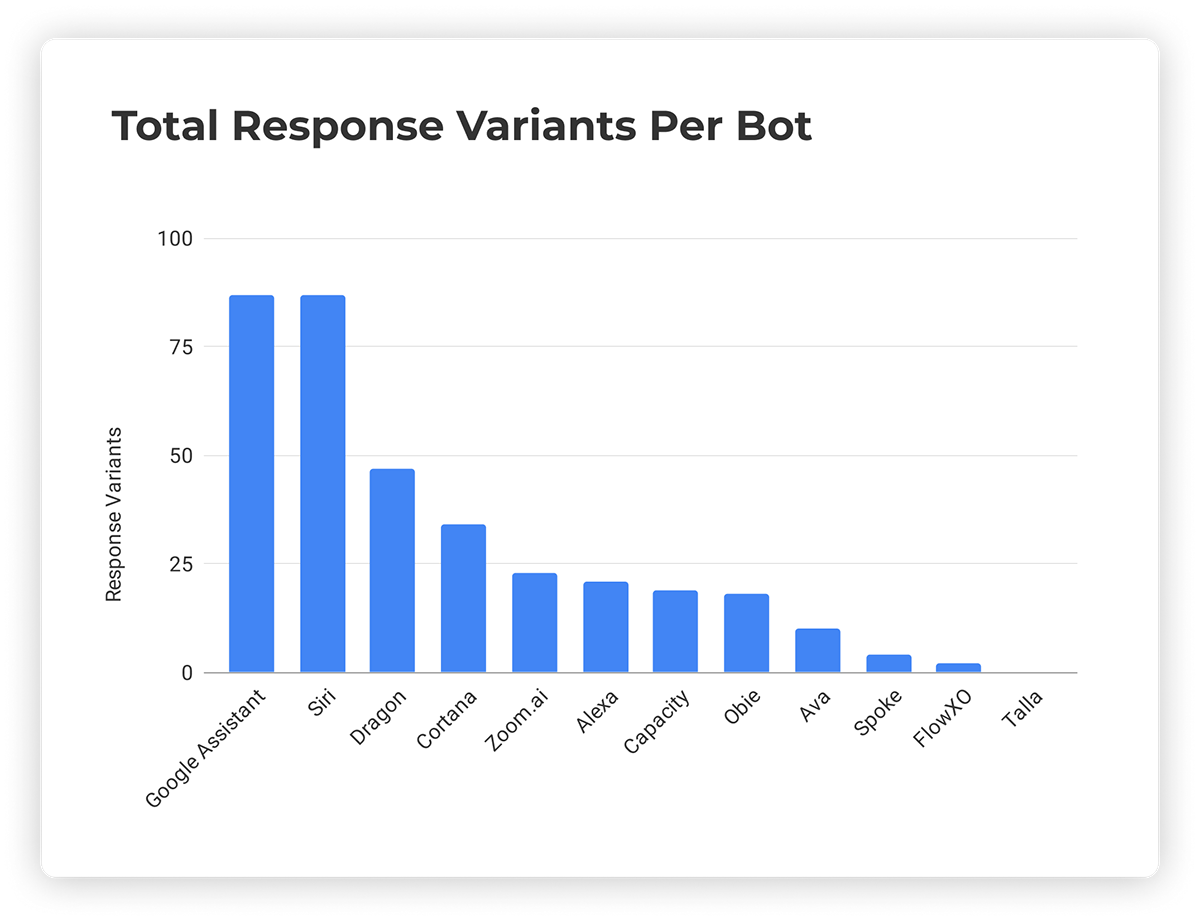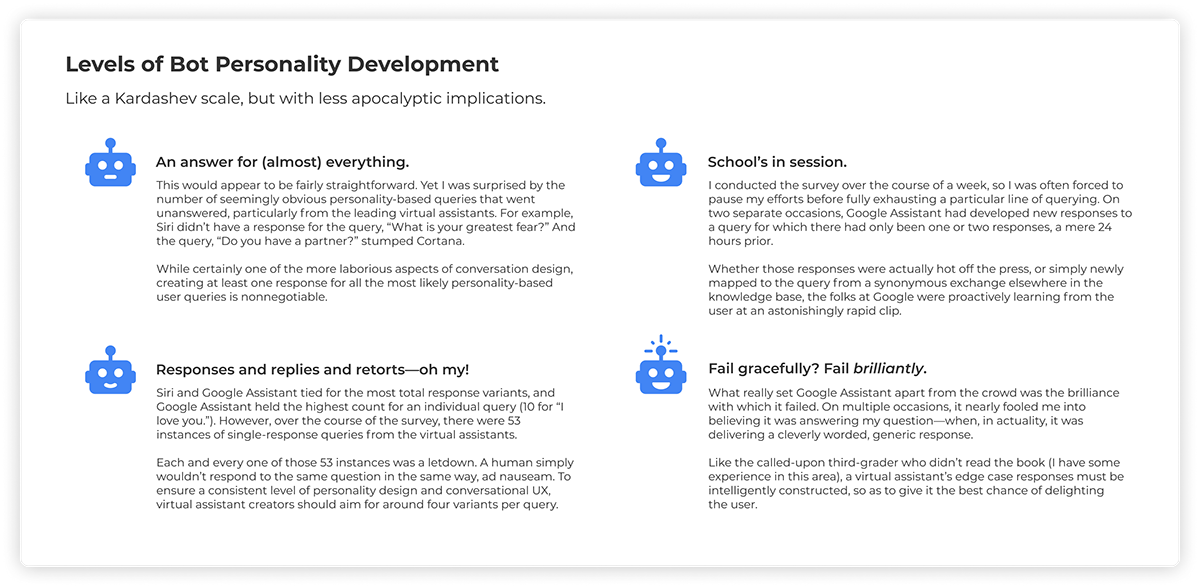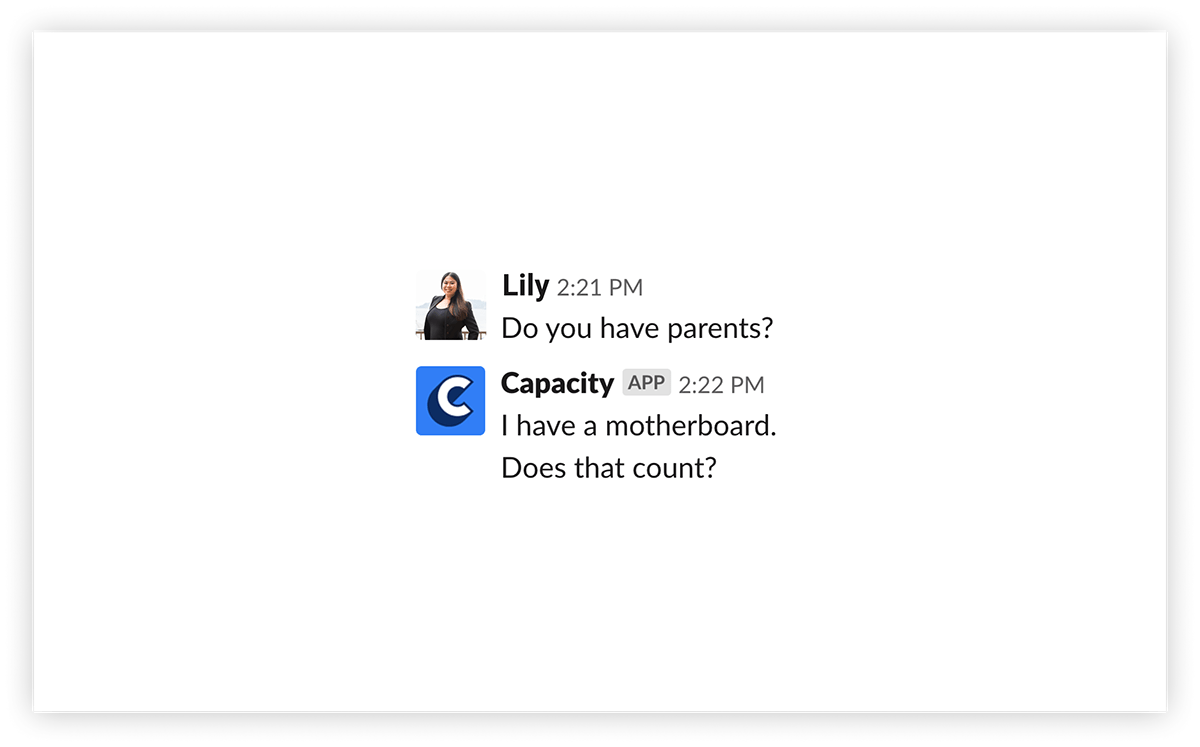Product Owner
Capacity
Deliverables
Virtual Assistant Personality
UX & Market Research
Skills
UX Research, Conversational UX Design, Personality Design
Tools
Figma, Proprietary Bot Builder
Background
I was initially hired on at Capacity to build out the personality of their virtual assistant. While I had years of comedy and screenwriting character development to draw from, my knowledge of virtual assistants was limited to the occasional, “Hey Google, could you, um, Google…”
If I was going to create a virtual assistant, I needed to get to know some virtual assistants.
So, I interviewed them.
Capacity
Deliverables
Virtual Assistant Personality
UX & Market Research
Skills
UX Research, Conversational UX Design, Personality Design
Tools
Figma, Proprietary Bot Builder
Background
I was initially hired on at Capacity to build out the personality of their virtual assistant. While I had years of comedy and screenwriting character development to draw from, my knowledge of virtual assistants was limited to the occasional, “Hey Google, could you, um, Google…”
If I was going to create a virtual assistant, I needed to get to know some virtual assistants.
So, I interviewed them.
I developed a 25-question survey designed to measure the personality—origin story, identity cohesion, response variants, etc.—of a dozen of the leading virtual assistants, in addition to Capacity's direct competitors.
I posed each query until failure, which was defined as either three consecutive repeat responses, two complete cycles through any associated response variants, or no response at all.
Below are some of my findings, followed by a selection of exchanges I developed for the personality I created.
Key Terms
Key Terms
Query: Any prompt—whether a question or a statement—used to elicit a response from a virtual assistant.
Response Variants: The multitude of ways in which a virtual assistant can respond to the same query. For example, the query, "Hi!" could evoke response variants such as, "Hello," "Hey there," "Yo," etc.
Response Rate: The percentage of occurrences that a virtual assistant returned a logically consistent response for a given query.





Armed with this data and a newfound, somewhat eerie connection with virtual assistants, I leveraged the dialogue and character development skills I’d acquired via screenwriting to build out Capacity’s personality.
In my opinion, the essence of the virtual assistant—proudly mechanical, infatuated with work—really shines through in the questions, “Are you married,” and, “What’s your passion?”
Keep in mind that what you’re seeing here is the fun part of conversation design. The much more time-consuming and challenging aspects conversational UX are akin to a game of chess, in which you’re attempting to think 7 dialogic steps ahead of the user.
Unlike chess, however, there are no agreed upon rules, and any victories go largely unnoticed.
In my opinion, the essence of the virtual assistant—proudly mechanical, infatuated with work—really shines through in the questions, “Are you married,” and, “What’s your passion?”
Keep in mind that what you’re seeing here is the fun part of conversation design. The much more time-consuming and challenging aspects conversational UX are akin to a game of chess, in which you’re attempting to think 7 dialogic steps ahead of the user.
Unlike chess, however, there are no agreed upon rules, and any victories go largely unnoticed.














